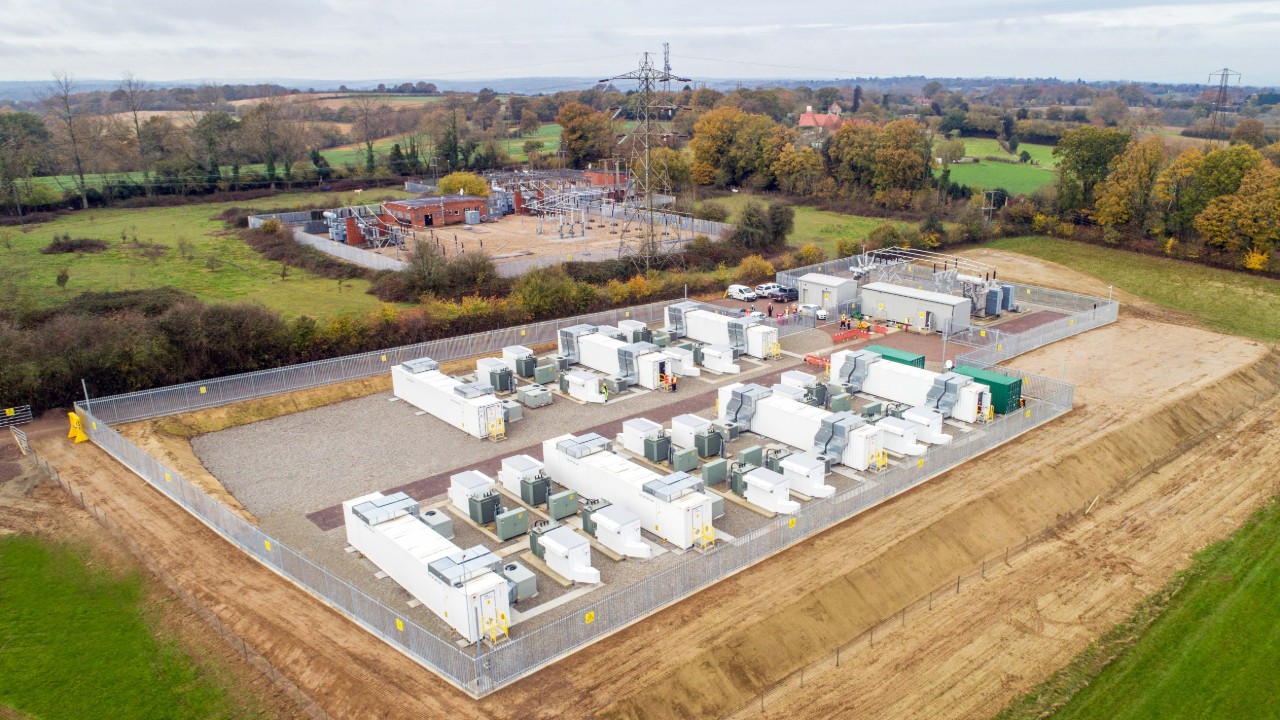
Image: Gresham House Energy Storage Fund.
Gresham House Energy Storage Fund has unveiled an 802MW pipeline, with 275MW of this currently funded and due to start construction shortly.
This comes as part of the company’s full year results to 31 December 2020, which also provided an update out to 31 March 2021 detailing how Gresham House expects its operational capacity to soar from the current 425MW to 700MW by Q1 2022.
Following this, a further seven battery storage projects are expected to come online in 2022, taking Gresham House’s total to 30. Of these, a 150MW/150MWh battery located in West Yorkshire is the largest, followed by a 100MW/100MWh project in Swindon with a projected commissioning date of Q1 2022.
This comes as the company recorded an underlying portfolio EBITDA of £15.8 million for 2020, up 135% from 2019. Underlying portfolio revenues were also up, with this being by 89% to £19 million. This was largely driven by frequency response services, trading and triads.
Operating revenues in the investment portfolio, meanwhile, came in at £16.1 million, with 79% of the total coming from frequency response via mainly EFR, FFR and Dynamic Containment, with 19% coming from trading and triad income and 5% from Capacity Market revenues.
Indeed, Dynamic Containment boosted revenues within Q4 2020 – the quarter in which the service went live – with the improved revenues of the service meaning that operating revenue per MW was over £100k/MW on an annualised basis.
Triad income covering Winter 2019/20 represented 9% of revenues compared with 24% for the period to 31 December 2019, with this being in line with Gresham House’s expectations due to prices being stepped down for the third and final time this winter as part of the restructuring of the Transmission Network use of Systems residual payment by Ofgem. It expects that from Winter 2020/21, triad income will represent an even smaller percentage of revenues.
When it comes to investments made by Gresham House during the 2020 financial year, £85.3 million was invested and 141MW of operational capacity added, split across the 41MW Bloxwich, 50MW Thurcroft and 50MW Wickham Market assets.
The company also raised £151.2 million of gross funds, split between a £31.2 million share issuance in March 2020 and a £120 million share issuance in November 2020. Alongside this, Gresham House Energy Storage Holdings – a wholly owned intermediate holding company – raised £14.9 million through a Bond issuance in October 2020, which was used for deployment into new projects.
Gresham House outlined how it has continued to see the cost per MW for the construction of new projects fall since the Seed Assets were acquired in part being due to the falling battery and equipment costs as well as targeting of larger capacity sites that are cheaper to build on a per MW basis. This has in turn led to a fall in the price paid per MW for new acquisitions, with this trend expected to continue.
Throughout the year, the impact of COVID-19 was modest, the company said, with commission dates on the Thurcroft and Wickham projects delayed. However, Gresham House lauded its status as the first and only operator to enter all new National Grid services in 2020, as well as claiming that its battery duration is longer than most of its competitors with over 1 hour average duration, helping to reduce battery cycles and degradation.
John Leggate CBE, chair of Gresham House Energy Storage Fund, celebrated the year as being a “milestone” for the company, adding that it has “access to the necessary resources” to deliver on its substantial project pipeline moving forwards.
It comes a month after Gresham House plc – which manages funds including Gresham House Energy Storage Fund – released its financial results, with a net core income of £40.8 million and an adjusted operating profit of £12.1 million.

